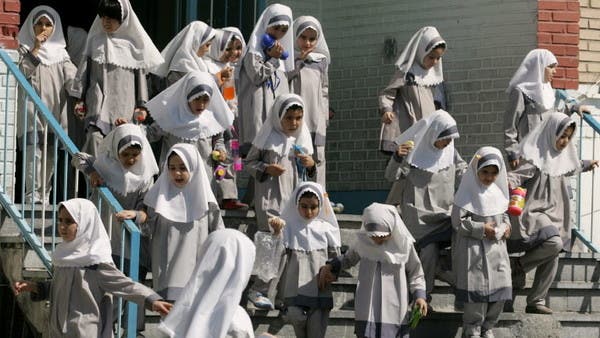
Students at a school in Iran (Archive – France Press)
The strange cases of poisoning that affected dozens of female students since last November were repeated in several Iranian regions today Saturday.
Several activists posted video clips on social networking sites showing ambulances taking students to hospital.
A spokesman for the University of Medical Sciences in the country’s western Hamedan province announced cases of poisoning in two girls’ schools in the city of Hamedan, southwest of the capital Tehran. of Kabutrung (West).
In turn, a spokesperson for the Department of Education in Fars Governorate, in the south of the country, indicated that “27 female students from the city of Gwar were transferred to the hospital after feeling vomiting, headaches and physical weakness.”
Also, 30 female students were poisoned at the “Nour al-Zahr” school in the northwestern city of Urmia, according to the “Tasnim” agency, which is close to the Iranian Revolutionary Guards.
Cases of poisoning were reported in “Hamza Ribadi” School for Girls in Rasht city (North) and “Syed Jamaluddin Astabadi” School in Abdulbad area.
In the town of Karaj, west of the capital, several primary school students were poisoned.
Security attacks people
At the same time, families of several poisoned female students gathered in front of the Ministry of Education building in Tehran, but security forces attacked them and arrested many, Iran International reported.
Mothers at a school in Lahijan said management prevented them from taking their daughters out after they were poisoned.
Nitrogen gas
Over a hundred schoolgirls have been gassed in schools in the past few days, with a series of similar cases reported since last November.
The suspected attacks began in the city of Qom, where Zahraa Sheikhi, spokeswoman for the parliamentary health committee, estimated that around 800 schoolgirls had been injured since the first cases of respiratory poisoning were recorded in late November. , and 400 in Borujerd (West).
The results of toxicological studies obtained by the Ministry of Health show that the toxic material used in Gom mainly consists of nitrogen gas N2, which is used in industry or as an agricultural fertilizer.
On the other hand, activists accused the authorities of engaging in these incidents to intimidate students after thousands of women and girls took part in massive demonstrations that began in mid-September following the killing of a young woman. Mahza Amini, and spread to various areas for several months, before security forces confronted them with repression and arrests.
Read more

“Creator. Award-winning problem solver. Music evangelist. Incurable introvert.”







